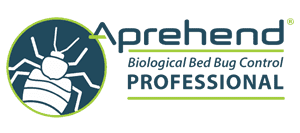
Larder beetles were named for their attraction to food pantries (larders) and cured meats. They enter homes in spring through spaces and gaps on the outside of buildings. Adults and larvae eat high-protein materials, such as animal hides and furs, feathers, meat, cheese, dry pet foods and dead animals or insects.
Flies can be an annoyance to humans and animals alike. Flies are an important part of the ecosystem, but they shouldn't be in your home. Flies can transmit many different diseases to people, including diseases associated with food poisoning like Salmonella or E. coli. Other diseases that flies are known to spread include typhoid fever, cholera, dysentery and rotavirus.
If you have an unbearable population of flies; our team at Apex Pest Control at 907-351-5531 can get them under control fast.

These larvae can end up in many parts of your home, including furniture, floors, and pet beds. There, they will spin a cocoon. Once mature, they’ll emerge as adult fleas and the cycle starts again.
No-see-ums, or biting midges, generally 1–3 mm in length. The family includes more than 5,000 species. No-see-ums are so small that they can pass through the average door screen. Because they're so small, you might not notice when these flying insects swarm around you or land on your skin. But after they bite, you'll definitely know they were there.
In the home, weevils can be brought in on packaged foods or they can come in from outside. Once inside, a population can grow and expand to food items stored nearby if the pests are not controlled.
We have many solutions to help you protect your home from nuisance bird species.
Squirrels hoard food and can cause a severe beetle infestation inside your home.





Designed by Alaska Search Marketing, LLC.